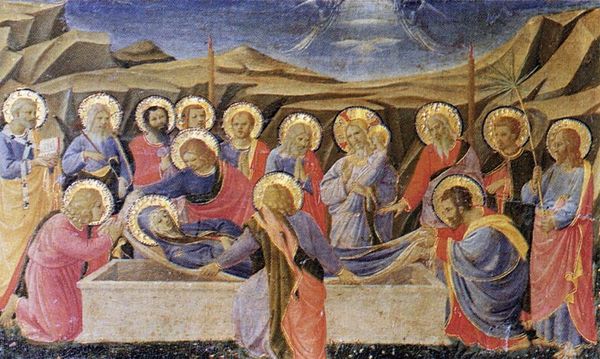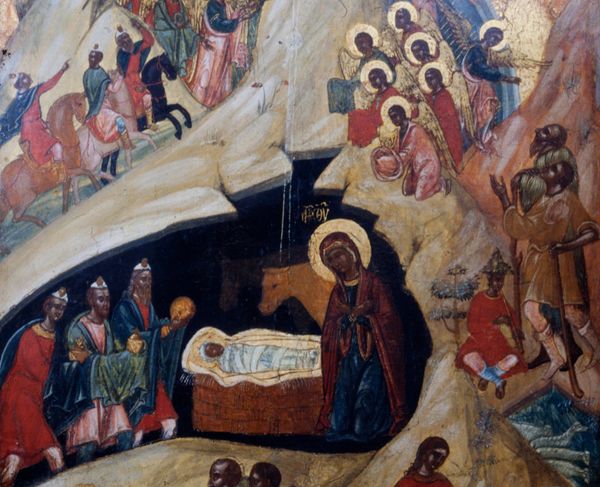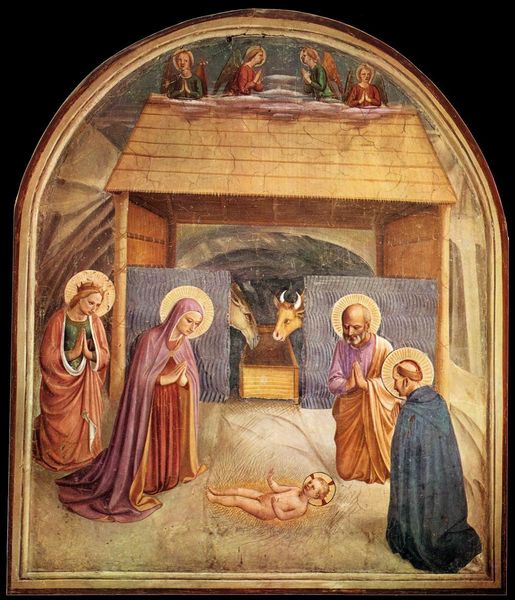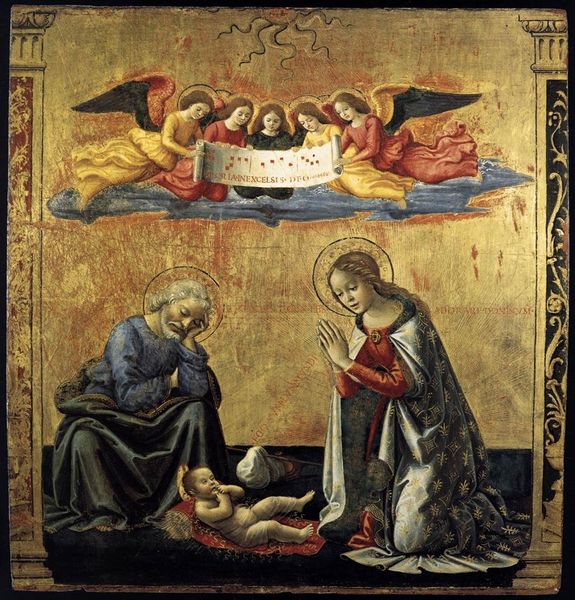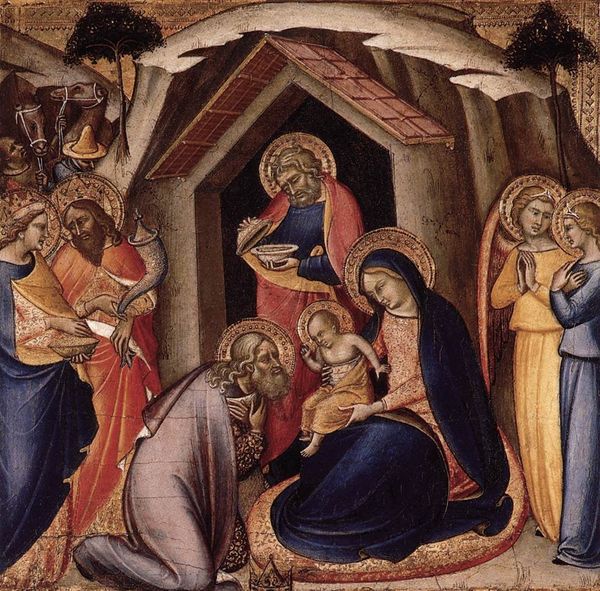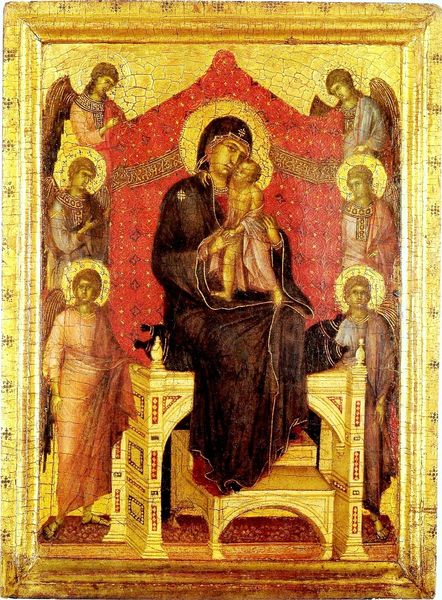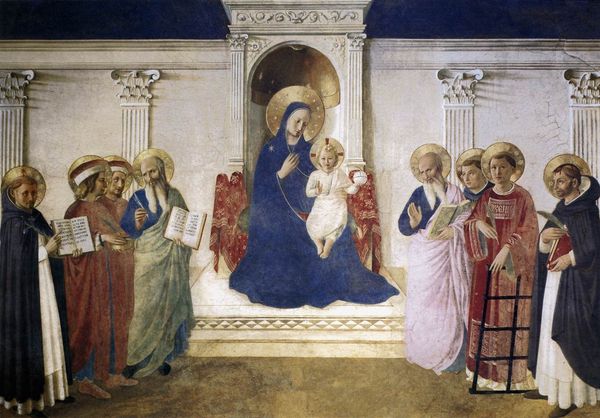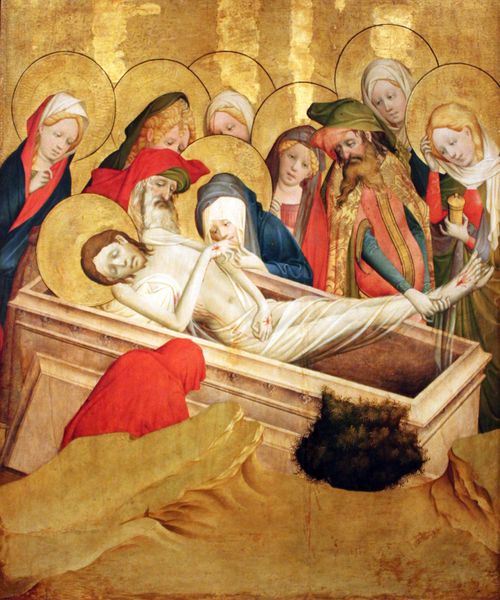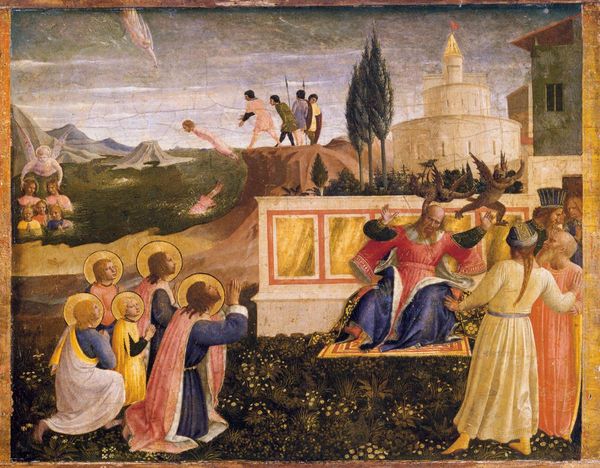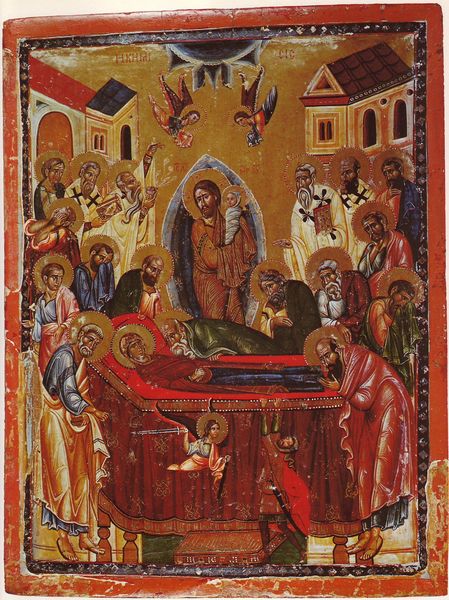
tempera, painting, fresco
#
medieval
#
narrative-art
#
tempera
#
painting
#
figuration
#
fresco
#
oil painting
#
jesus-christ
#
christianity
#
men
#
history-painting
#
italian-renaissance
#
early-renaissance
#
christ
Dimensions: 45 x 43 cm
Copyright: Public domain
Curator: Giotto’s "Entombment," dating back to 1325, offers us a poignant visualization of grief. It is part of his fresco cycle in the Scrovegni Chapel in Padua, an important landmark in art history because of its narrative power and emotional resonance. Editor: Whoa, talk about feeling the weight of a moment. Those figures surrounding Christ, it's like their sorrow is radiating outward. You almost feel like you can hear their lament. What is particularly striking for me is their humanity. Curator: Absolutely. Giotto revolutionized painting by infusing his figures with palpable human emotion. He moved away from the more stylized representations common in the Medieval era towards something more naturalistic. His art captured the subtleties of grief through posture and facial expressions. It resonated deeply with a changing society increasingly concerned with individualism and personal faith. Editor: And those weeping angels above, diving and swirling – they’re so not serene cherubs! Their raw, almost frantic energy really amplifies the whole scene, doesn’t it? Kind of punk rock for the 14th century, I'd say. Curator: It is very theatrical. By including the angels Giotto visually intensified the human drama against the divine, and brought an entirely fresh perspective to traditional iconographic representations. We have these celestial bodies mimicking the movements of earthly bodies. Editor: It’s such a contrast, though, with that quite flat landscape behind. A bit dreamlike, maybe suggesting this kind of sorrow transcends the immediate, earthly space? Curator: Yes, there is a timelessness created through its composition, combined with his artistic skills in fresco, and it certainly contributes to the overall power of this very unique narrative representation. "Entombment" became one of the cornerstone of Renaissance painting because it transformed painting into this very accessible public art that brought forward the conversation of humanist ideals. Editor: Well, it's hard to stand here and not feel… something. Giotto had a real knack for capturing these powerful emotional realities that transcend any particular historical context, haven't it? Curator: He did, and studying Giotto allows us to appreciate both his genius, but also the shifts that shaped art production and artistic practice for centuries. It helps us appreciate how profoundly public taste has contributed to art history itself.
Comments
No comments
Be the first to comment and join the conversation on the ultimate creative platform.
